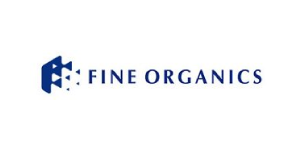Ircon International Limited, formerly Indian Railway Construction Company Limited (IRCON), is an engineering and construction, specialized in transport infrastructure. Incorporated in 1976, IRCON International Limited (IRCON) is four-decade old government company (under the ministry of railways). It is engaged in the business of engineering and construction mainly specializing in major projects including railways, highways, bridges, flyovers, tunnels, aircraft maintenance hangars, runways, EHV substations, electrical and mechanical works, commercial and residential properties, development of industrial areas and other infrastructure activities. IRCON provides EPC services on a fixed-sum turnkey basis as well as on an item-rate basis for various infrastructure projects. In 2016, IRCON was ranked 248 in the list of the top 250 international contractors by Engineering News Record (ENR) of the United States. Presently it has 26 project offices and five regional offices to support and manage its business operations throughout India and five overseas project offices in Sri Lanka, Bangladesh, Malaysia, South Africa, and Algeria to provide onsite support overseas.
IRCON International (IRCON) – a Mini Ratna company incorporated by the Ministry of Railways – operates in the entire spectrum of infra services including railways, highways, electrical, metro and buildings etc. It provides EPC services on a fixed-sum turnkey basis as well as on an item-rate basis for various infrastructure projects and also undertakes projects on BOT model. It has been demonstrating superb execution over last four decades and current order book at Rs224bn provides healthy visibility, going forward.
As per the Govts divestment target of Rs800bn in FY19, IRCON is divesting ~10% stake by offering 9.9mn shares via Offer for Sale (OFS) at a price band of Rs470-475 to raise Rs44.7bn at the upper end of the band. Consolidated PAT of Rs4.1bn for FY18 translates into an attractive PE of 10.9x.
There has been a steep price correction in listed infrastructure companies over last 3-4 months on the back of prevailing concerns over the reversal of interest rates, persistent delay in land acquisition despite higher compensation and funding constraints. We believe price offering by IRCON factors in all. Further, IRCON appears to be insulated with a higher interest rate scenario with no leverage.
Key Investment Arguments
Key Risks
Outlook & Valuation
IRCON's earnings (Rs4.1bn PAT in FY18 vs. Rs5.6bn in FY15) have not witnessed any growth in last 3 years despite witnessing consistent growth in order book mainly led by margin contraction and shrinkage in overseas revenue.
However, it has maintained a healthy dividend payout ratio (>45%) over the years, as it pays out either 30% of PAT or 5% of Net Worth (whichever is higher) as dividend.
Further, considering healthy returns generated by NBCC and RITES (which are broadly infrastructure space being government companies), we feel IRCON's valuation at 10.9x FY18 earnings looks attractive and may not disappoint the investors.
Hence, we recommend SUBSCRIBE to the Issue.
Next read : If HPCL Is A Good Stock To Bet On?
IRCON International (IRCON) – a Mini Ratna company incorporated by the Ministry of Railways – operates in the entire spectrum of infra services including railways, highways, electrical, metro and buildings etc. It provides EPC services on a fixed-sum turnkey basis as well as on an item-rate basis for various infrastructure projects and also undertakes projects on BOT model. It has been demonstrating superb execution over last four decades and current order book at Rs224bn provides healthy visibility, going forward.
As per the Govts divestment target of Rs800bn in FY19, IRCON is divesting ~10% stake by offering 9.9mn shares via Offer for Sale (OFS) at a price band of Rs470-475 to raise Rs44.7bn at the upper end of the band. Consolidated PAT of Rs4.1bn for FY18 translates into an attractive PE of 10.9x.
There has been a steep price correction in listed infrastructure companies over last 3-4 months on the back of prevailing concerns over the reversal of interest rates, persistent delay in land acquisition despite higher compensation and funding constraints. We believe price offering by IRCON factors in all. Further, IRCON appears to be insulated with a higher interest rate scenario with no leverage.
Key Investment Arguments
- Superior Execution & Diversification Advantage
- Healthy Growth Visibility on Robust Order Book
- Light Working Capital Entails Healthy Cash Generation
- Likely Expansion in RoE
Key Risks
- Adverse Change in Policies relating to Railways Investment
- Execution Delay
- Substantial Rise in Input Cost & Other Overheads
Outlook & Valuation
IRCON's earnings (Rs4.1bn PAT in FY18 vs. Rs5.6bn in FY15) have not witnessed any growth in last 3 years despite witnessing consistent growth in order book mainly led by margin contraction and shrinkage in overseas revenue.
However, it has maintained a healthy dividend payout ratio (>45%) over the years, as it pays out either 30% of PAT or 5% of Net Worth (whichever is higher) as dividend.
Further, considering healthy returns generated by NBCC and RITES (which are broadly infrastructure space being government companies), we feel IRCON's valuation at 10.9x FY18 earnings looks attractive and may not disappoint the investors.
Hence, we recommend SUBSCRIBE to the Issue.
Next read : If HPCL Is A Good Stock To Bet On?










